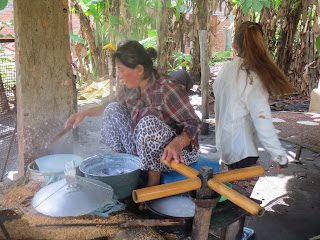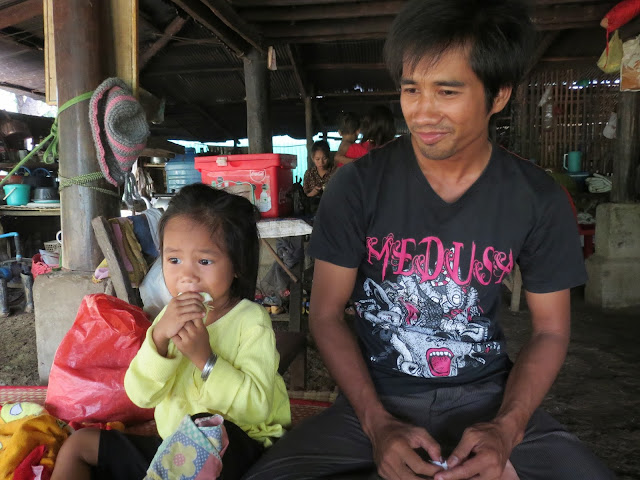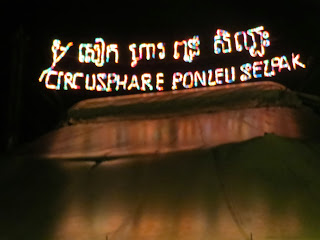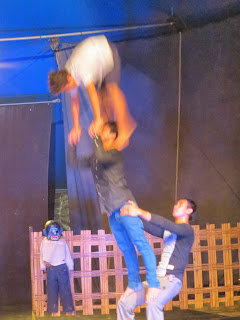I warn you that some of the following photos may be upsetting because of their subject matter.
 |
| Another day in the tuk tuk in BB during the rainy season, another day of flooded streets. This was though the worst flooding BB has experienced in 20 years; the flooding caused a number of deaths. |
 |
| I can only wonder again how people gain access to their homes and businesses during the floods. |
 |
| Truly, a street market! This was the Muslim area of town, an area we had not seen before in BB. |

 |
| The new Wat being built was started in 2007. |
 |
| Just a few meters away from the temple or wat itself is now the Well of Shadows; the panels at the base in the picture above depict the horrors inflicted by the Khmer Rouge. |

 |
| Detailed panel views above and below. |
 |
| Notice the basket of freshly made bamboo sticky rice available for sale behind me. While we were learning about how it was made, several people stopped by on motorcycles and bikes to buy some. |
 |
| More market shots as we drove by in the tuk tuk. |
 |
| The (edible) rice paper "village" |
 |
| I thought the rice paper looked like bubble wrap and tasted pretty bland; perhaps an acquired taste? |
 |
| Another of the tractors/cart conveyances. |
 |
| We then drove to Wat Ek Phnom. |
 |
| After this building near the wat had finished being used by UNICEF, it was donated to Australian volunteers who teach English, provide snacks, day care etc to local children. |
 |
| The above photos are at the Australian run volunteer program. |
 |
| The Wat was built in 2001 |
 |
| This local tourist police officer wanted us to pay to enter the wat but Happy asked him why we should pay when nothing is ever done to improve the wat, so we didn't! |
 |
| More views from the tuk tuk. |
 |
| Sorry this picture is upside down. Thought you might like to see the inside of Happy's home but be careful and don't put a crink in your head! |
 |
| One view from our roof top table on the patio. Can you imagine having to figure which wire needed repairing from this jumble of wires? |
 |
| Never seen a bill suggesting a tip for both the chefs and server - makes sense though. |
 |
| Heaven on earth - a real and positively swanky Western bathroom in the restaurant! |
 |
| After lunch we finally went INTO the local market for the first time after just driving past it day after day. |
 |
| I finally understood one meaning of the phrase "sweat shops" after seeing these men and women sewing. |
 |
| I especially loved seeing the contortionists after seeing others in Mongolia and China previously on this trip. |
 |
| The four musicians were at the back of the stage and were a perfect accompaniment to the flame throwers and all the other acts. |
 |
| The young emcee mentioned at the end that 1 of the performers had just been accepted into the Cirque de Soleil - a major coup for the community. |

























































No comments:
Post a Comment